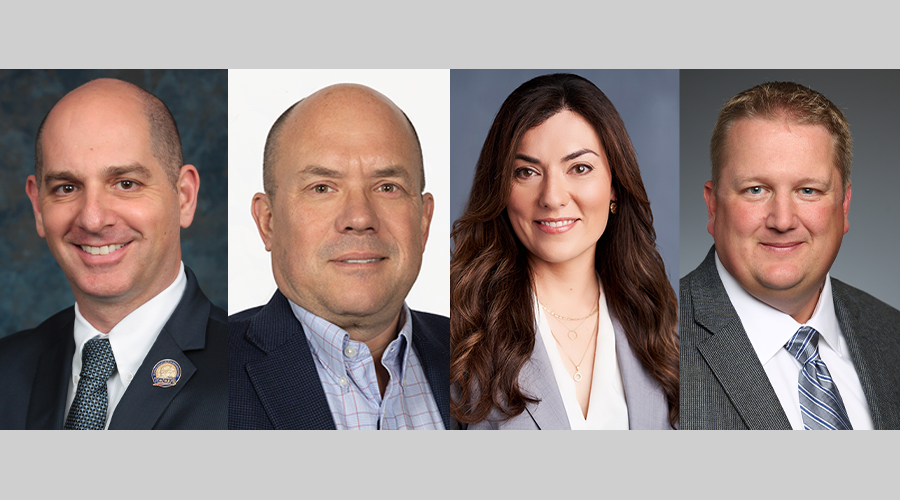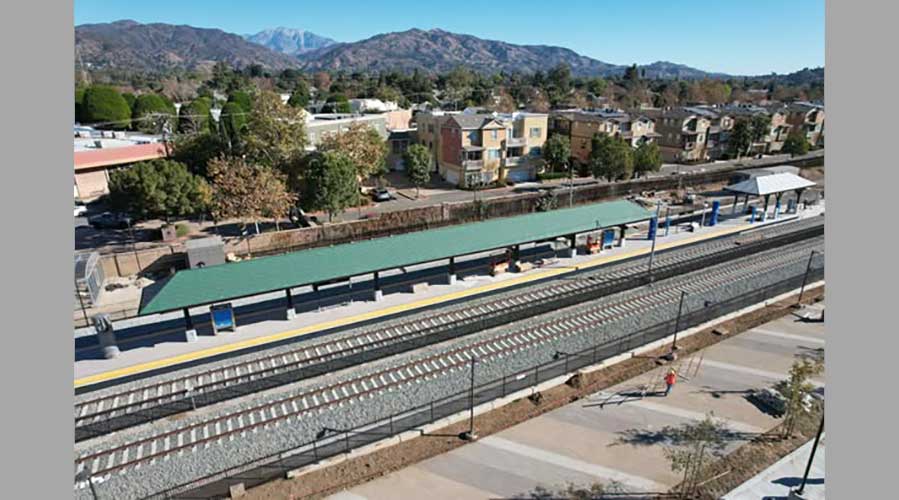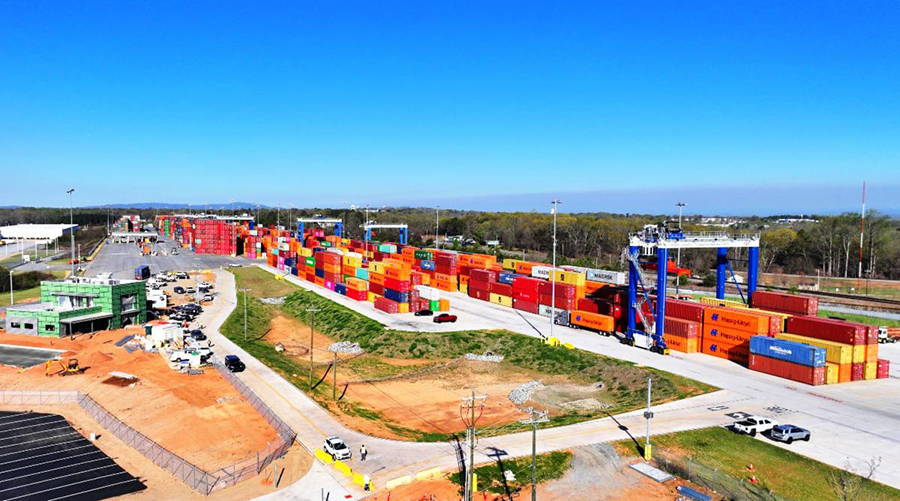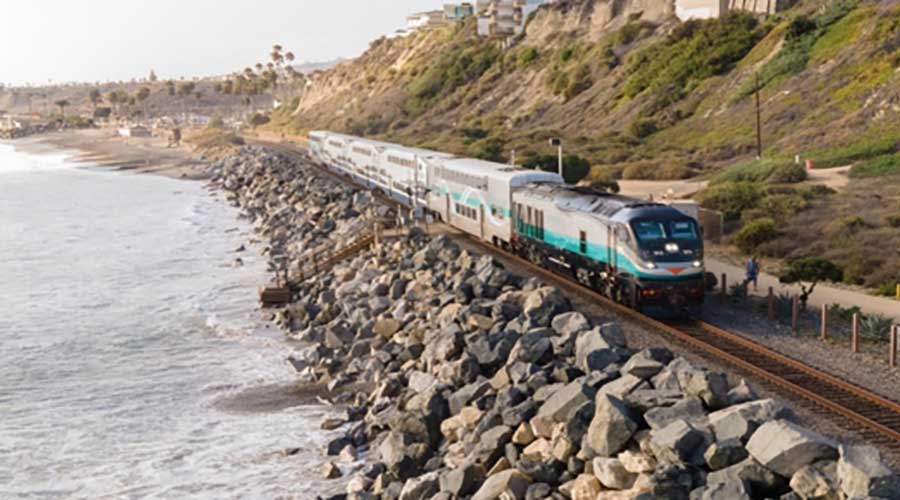Newsletter Sign Up
Stay updated on news, articles and information for the rail industry
Stay updated on news, articles and information for the rail industry
 railPrime
railPrime
Rail News Home
Rail Industry Trends
Rail News: Rail Industry Trends
On Wednesday, nearly 400 railroaders, rail industry association representatives and lobbyists descended on Washington, D.C., during the annual Railroad Day on Capitol Hill. Attendance set a record, as did the more than 240 requests for appointments with congressmen.
Before congressional meetings took place, organizers did something new this year. At 7 a.m., Association of American Railroads (AAR) Senior Vice President for Government Affairs Obie O’Bannon and Adam Nordstrom of lobbyist firm Chambers, Conlon and Hartwell L.L.C. led a half-hour briefing on the event’s three key topics.
They directed attendees — who included representatives from the AAR, American Short Line and Regional Railroad Association (ASLRRA), Railway Supply Institute, National Railroad and Construction Maintenance Association, Railway Systems Suppliers Inc., Railway Engineering-Maintenance Suppliers Association and Railway Tie Association — to try to generate support for two pieces of legislation and voice opposition to another.
Railroaders and AAR officials then proceeded to give congressmen a heads up on the Freight Rail Infrastructure Capacity Expansion Act, which Sen. Trent Lott (R-Miss.) plans to introduce to the Senate soon. To be proposed as a tax incentive program for Class Is and any company that makes a qualified freight-rail infrastructure expenditure — such as a shipper or trucking firm — the bill would provide a 25 percent capacity expansion tax credit.
The credit would apply to monies spent to build new freight-rail infrastructure, such as adding a second mainline, building or extending a siding, constructing intermodal or transload facilities, or installing a signal system in dark territory. The credit also would apply to expenditures on new locomotives that increase the horsepower capacity of a railroad’s fleet.
In addition, the bill would provide 100 percent intermodal tax equity on certain freight-rail infrastructure expenditures to “place capital cost recovery of railroad infrastructure on the same basis as other competing transportation modes,” according to materials handed out at the event. The intermodal tax equity wouldn’t apply to locomotive acquisitions.
Meanwhile, ASLRRA and short line officials spent the day trying to convince legislators to extend the Railroad Maintenance Tax Credit, or Section 45G of U.S. Tax Code, at least another three years. Enacted last year as part of the American Jobs Creation Act, the tax credit legislation expires on Dec. 31, 2007.
Regional and short lines can earn 50 cents in tax credits for every dollar spent on qualified infrastructure improvement projects. Small roads can determine their credit cap by multiplying the track miles they own or lease by $3,500. ASLRRA officials estimate the short-line industry’s credits will total about $500 million by 2007’s end.
In the meantime, AAR officials and other attendees voiced opposition to the Railroad Competition Improvement and Reauthorization Act of 2005 (H.R. 2047), Railroad Competition Act of 2005 (S. 919) and Railroad Antitrust and Competition Act of 2005 (H.R. 3318), which propose to remove railroads’ exemptions from antitrust laws and re-regulate the rail industry.
The event concluded with ASLRRA’s legislative dinner, which included speeches by AAR President and Chief Executive Officer Edward Hamberger, ASLRRA President Richard Timmons and ASLRRA Legislative Policy Committee Chairman Ed McKechnie. During the dinner, ASLRRA Chairman Roger Bell presented K. Earl Durden the 2006 Excellence in Advancing Rail Legislation Award.
— Steve Bolte
3/10/2006
Rail News: Rail Industry Trends
Rail industry focuses lobbying efforts on three legislative fronts during one-day D.C. event
advertisement
On Wednesday, nearly 400 railroaders, rail industry association representatives and lobbyists descended on Washington, D.C., during the annual Railroad Day on Capitol Hill. Attendance set a record, as did the more than 240 requests for appointments with congressmen.
Before congressional meetings took place, organizers did something new this year. At 7 a.m., Association of American Railroads (AAR) Senior Vice President for Government Affairs Obie O’Bannon and Adam Nordstrom of lobbyist firm Chambers, Conlon and Hartwell L.L.C. led a half-hour briefing on the event’s three key topics.
They directed attendees — who included representatives from the AAR, American Short Line and Regional Railroad Association (ASLRRA), Railway Supply Institute, National Railroad and Construction Maintenance Association, Railway Systems Suppliers Inc., Railway Engineering-Maintenance Suppliers Association and Railway Tie Association — to try to generate support for two pieces of legislation and voice opposition to another.
Railroaders and AAR officials then proceeded to give congressmen a heads up on the Freight Rail Infrastructure Capacity Expansion Act, which Sen. Trent Lott (R-Miss.) plans to introduce to the Senate soon. To be proposed as a tax incentive program for Class Is and any company that makes a qualified freight-rail infrastructure expenditure — such as a shipper or trucking firm — the bill would provide a 25 percent capacity expansion tax credit.
The credit would apply to monies spent to build new freight-rail infrastructure, such as adding a second mainline, building or extending a siding, constructing intermodal or transload facilities, or installing a signal system in dark territory. The credit also would apply to expenditures on new locomotives that increase the horsepower capacity of a railroad’s fleet.
In addition, the bill would provide 100 percent intermodal tax equity on certain freight-rail infrastructure expenditures to “place capital cost recovery of railroad infrastructure on the same basis as other competing transportation modes,” according to materials handed out at the event. The intermodal tax equity wouldn’t apply to locomotive acquisitions.
Meanwhile, ASLRRA and short line officials spent the day trying to convince legislators to extend the Railroad Maintenance Tax Credit, or Section 45G of U.S. Tax Code, at least another three years. Enacted last year as part of the American Jobs Creation Act, the tax credit legislation expires on Dec. 31, 2007.
Regional and short lines can earn 50 cents in tax credits for every dollar spent on qualified infrastructure improvement projects. Small roads can determine their credit cap by multiplying the track miles they own or lease by $3,500. ASLRRA officials estimate the short-line industry’s credits will total about $500 million by 2007’s end.
In the meantime, AAR officials and other attendees voiced opposition to the Railroad Competition Improvement and Reauthorization Act of 2005 (H.R. 2047), Railroad Competition Act of 2005 (S. 919) and Railroad Antitrust and Competition Act of 2005 (H.R. 3318), which propose to remove railroads’ exemptions from antitrust laws and re-regulate the rail industry.
The event concluded with ASLRRA’s legislative dinner, which included speeches by AAR President and Chief Executive Officer Edward Hamberger, ASLRRA President Richard Timmons and ASLRRA Legislative Policy Committee Chairman Ed McKechnie. During the dinner, ASLRRA Chairman Roger Bell presented K. Earl Durden the 2006 Excellence in Advancing Rail Legislation Award.
— Steve Bolte


 LRW Honors Amtrak’s Acheson As Railway Woman Of The Year
LRW Honors Amtrak’s Acheson As Railway Woman Of The Year
 From Editor-In-Chief Foran: Of Gender Equity And Inclusion
From Editor-In-Chief Foran: Of Gender Equity And Inclusion
 Spotlight On Some Of Today’s Rail Safety Products
Spotlight On Some Of Today’s Rail Safety Products
 Women of Influence in Rail eBook
Women of Influence in Rail eBook








